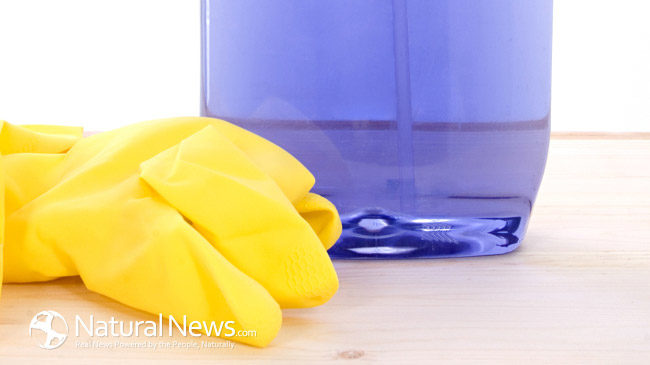Our lungs are subject to many toxins and chemicals as part of our daily living, but especially when we go into cleaning mode. We scrub and wipe and spray those products on surfaces over and over, more and more, until the job is done. Squeaky clean takes work, but in the process of this labor, our lungs are breathing in those items we are using to achieve the gloss and glow of cleanliness. It is no secret that cleaners can be harmful and irritating to our skin, but what we don’t see is what they are doing to our lungs. Asthma might flare up or respiratory issues might be warning signs (such as coughing), but we should also be weary of the long-term side effects.
This is especially true for people who continuously use these cleaners for their occupational needs or as part of their household routine. In fact, studies have shown using bleach just one time per week had a 32% higher risk of developing COPD. Another study found that women who work in the cleaning industry have a significantly higher decline in lung health versus those who do not work in the cleaning profession. The decline in lung function was comparable to smoking one pack of cigarettes every day.
It’s the fumes from the products that cause concern for our bodies. Almost instantly when the fumes reach the lungs, they can cause inflammation, shortness of breath, coughing, and/or sneezing. Excessive fumes can cause nausea, dizziness, and irritation to the eyes, nose, and/or throat.
There are particular products to be cautious about when using and to avoid using repetitively over time. Reading labels to find out what products contain is the key. Ammonia and bleach are the leaders in harmfulness. Products that contain volatile organic compounds (VOCs) are known to cause headaches and respiratory issues. Products that contain fragrance can also be harmful. “Fragrance” is an umbrella term and can contain many chemicals not listed including phthalates. These chemicals have been linked to liver and breast cancers, reproductive problems, hormonal complications.
Any of these chemicals can be found in a number of items. Be mindful of what air fresheners, aerosol sprays, oven cleaners, floor polishes, chlorine beach, laundry detergent, upholstery cleaners, and dishwashing detergents, have in them. In any case, there are protective measures you can take. Always clean in well ventilated areas, use water protective gloves, breathing masks, skip scented products, and wear eye protection. There are a multitude of products that can be used naturally. Natural, effective cleaning agents include baking soda, vinegar, hydrogen peroxide, salt, and lemon. You may not even need to go to the store. Reducing your exposure at home is something to be proactive about because you can control the environment, verses when out in public places. Every little interaction adds up and not that we should be paranoid because we do have immunity and defenses, but like anything we can do for our health, we need to take measures when and where we can.
Hazardous substances in frequently used professional cleaning products – PMC (nih.gov)
Reducing chemical exposures at home: opportunities for action – PMC (nih.gov)








